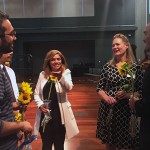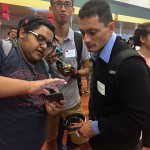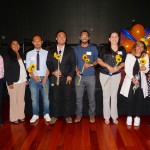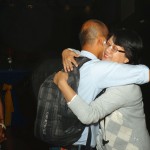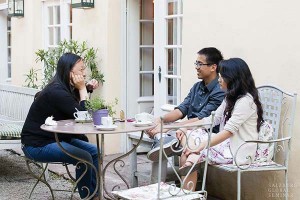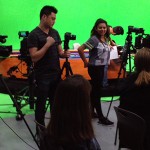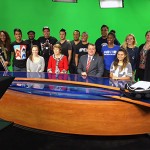- Marianne Wheeler, second from the right, talks with some of her former students at the International Gateways 40th anniversary celebration.
- Current internationals students talk with one of their instructors, Claudio Sanchez, at the celebration.
- Students speakers pose with administrators. From left: International Gateways Director Sarah McGregor, CIES Dean Ruth Huard, Monkol “Darm” Hongchai, Huy Le, Meshal Alshahrani, Maya Arreaza Romero, Instructor Marianne Wheeler.
- Julie Yang, a graduate student advisor at International Gateways, congratulates Monkol “Darm” Hongchai after his remarks at the 40th anniversary celebration. Hongchai is a current graduate student at SJSU.
The College of International and Extended Studies staff and administrators celebrated the 40th Anniversary of International Gateways in October.
As part of the celebration, former International Gateway students returned to share their personal stories with International Gateways and their successes since completing programs in CIES.
International Gateways started in 1976 as a training program for SJSU students who were pursuing linguistics degrees. Originally called Studies in American Language, the first students were from Japan before it expanded to students from all over the world.
Since then, International Gateways has served thousands of students from 60 different countries with its core programs.
Nearly 400 students are enrolled in its programs this fall, and half of those students are conditionally admitted to an SJSU degree program.
“With International Gateways, these students will gain enhanced communication skills through intensive English-language courses,” said Provost Andy Feinstein, during a welcome at the event. “They will prepare for undergraduate and graduate school admissions tests that will make them more successful in their degree coursework.”
Current programs include Academic and Test Preparation; Semester at SJSU; MBA Preparation; Active Communication in English; and custom programs.
